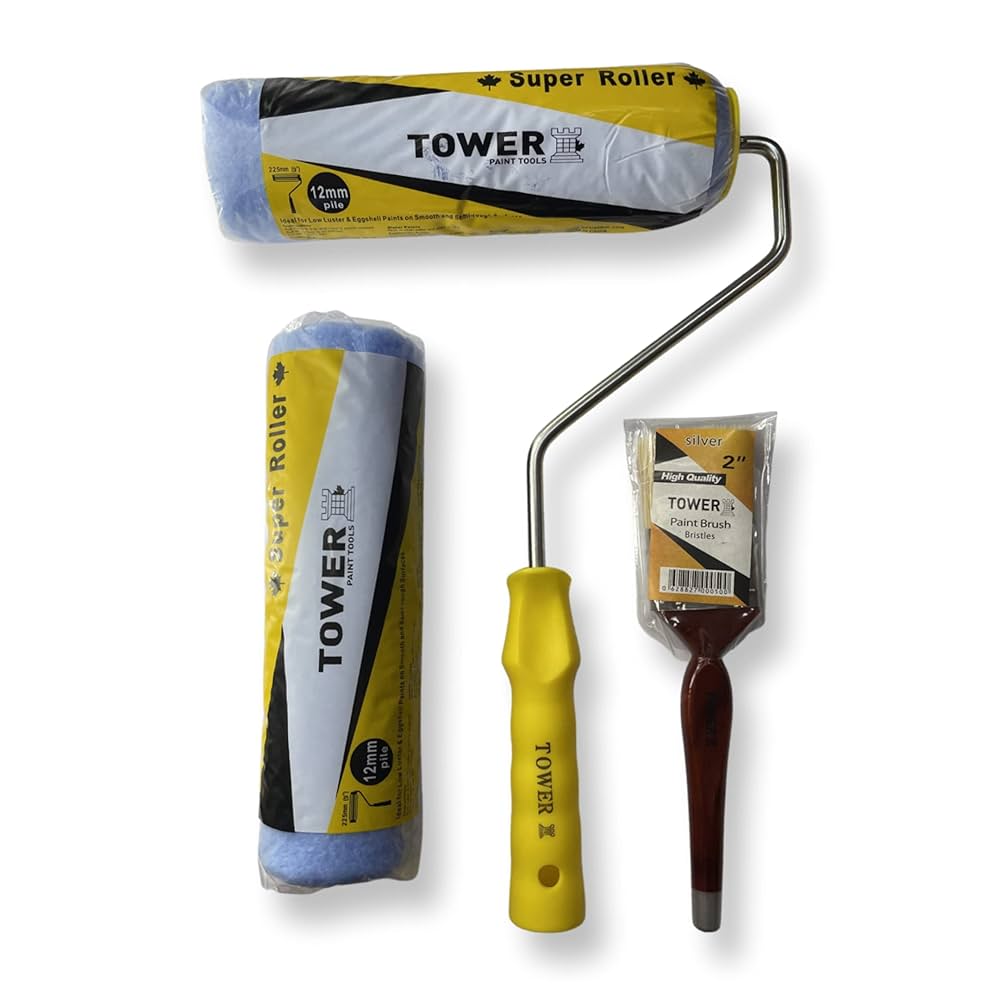Painting Tools Guide: From Rollers to Refill Cans
Painting tools are essential gear for construction site success. From prepping surfaces to applying the final coat, the right tools ensure smooth results, save time, and reduce waste. This guide covers the most important painting tools: what they do, how they work, and why they’re critical for hardware shopkeepers and exporters handling bulk orders—especially in construction-related hardware and coatings.

1. Surface Prep Tools: The Foundation of a Great Finish
Before paint even touches the surface, proper preparation is required. Clean, rust-free surfaces promote long-lasting results, especially on metal structures.
- Sandpaper & Abrasive Pads: Remove rust and old paint. Various grit levels—from coarse (60‑80 grit) to fine (220+)—help achieve a smooth base.
- Wire Brushes & Scrapers: Perfect for hardened rust or flaking paint on steel or concrete.
- Blowers & Cloths: Clean dust and debris to allow primers to adhere correctly.
Importance: ASTM standards and the Minnesota DOT manual emphasize that good surface prep protects against corrosion and ensures coating longevity ASTM International | ASTM+1ASTM International | ASTM+1Wikipedia+6Wikipedia+6ANSI Webstore+6mndot.org.
2. Rollers: Fast Coverage on Large Surfaces
Ideal for walls, ceilings, and flat surfaces:
- Nap Lengths:
- Short (¼”) – smooth surfaces like plaster
- Medium (½”) – standard walls
- Long (¾”+) – rough textures like stucco or brick
- Material Types:
- Synthetic (nylon/polyester) for water-based paints
- Natural (lambswool) for oil-based paints
Pro Tip: Choose the correct nap—wrong type leads to streaks, drips, and missed spots.
3. Roller Frames & Extension Poles
- Frames: Heavy-duty models with sealed ends reduce splash-back.
- Poles: Telescopic poles allow painters to reach 12+ foot heights without ladders—safer and faster.
4. Paint Brushes: Precision in Every Stroke
Used around edges, corners, and trim:
- Sizes:
- 2″–3″ sash brushes for straight lines
- 4″–6″ block brushes for broad areas and rough surfaces
- Types:
- Synthetic for water-based paints
- Natural bristle for oil/alkyd paints
Tip: Keep multiple brushes—one for cutting-in, others for touch-ups—to maintain quality.
5. Paint Trays, Liners & Pans
- Trays: Reusable plastic or metal trays for roller loading.
- Disposable Liners: Make cleanup easy.
- Oval Pans: Ideal for brushes and smaller rollers.
6. Extension Refill Cans & Pour Spouts
- Refill Cans: Store mixed paint near the job site; easier than lugging full pails.
- Pour Spouts: Plastic spouts cut onto 5‑gal cans reduce spills when refilling smaller containers.
7. Masking & Surface Protection Tools
- Tape: Painter’s tape protects edges and creates clean lines.
- Drop Cloths: Canvas or polyethylene sheets prevent splatter damage on floors or furniture.
8. Mixers & Stirring Tools
Paint settles—even in sealed cans:
- Drill-Driven Paint Mixers: Blend large volumes evenly.
- Wooden or Metal Stir Sticks: Keep in stock for last-minute touch-ups.
9. Sprayers & Nozzles (For High-Volume Work)
Commercial jobs often use air or airless sprayers:
- Airless Sprayers: Provide consistency and speed.
- Nozzle Tips: Choose based on paint viscosity; hardware shops should stock a wide range.
10. Cleaning & Safety Equipment
- Solvent Cans & Rags: For brush cleanup—proper disposal is required.
- Gloves & Masks: Protect workers from chemicals.
- Sandpaper Discs: Reusable discs extend tool life.
11. Quality & Compliance
Exporting products means meeting standards. Familiarize with ISO and ASTM painting tool norms, such as:
- ISO 8501-1 for steel surface prep Whole Building Design GuideANSI WebstoreWikipedia+1Wikipedia+1
- ASTM D3276 for inspection standards on coatings ASTM International | ASTM+1mndot.org+1.
These standards give customers confidence and help hardware exporters comply with international contracts.
12. Practical Tips for Hardware Shopkeepers & Exporters
- Bundle Tools: Offer painting kits with rollers, trays, brushes, tape, and gloves.
- Stock Spare Parts: Keep extra roller covers, sprayer nozzles, and refill cans on hand.
- Educate Customers: Display usage guides or basic “how-to” on packaging.
- Highlight Standards: Use terminology like “ASTM-grade steel wire brush” or “ISO-certified roller nap”.
- Offer Local Delivery: Have refill cans and sprayer tips ready for quick dispatch—adds convenience.
📞 Verified Contact Details
For standards and certifications:
- ASTM International
100 Barr Harbor Drive, West Conshohocken, PA 19428–2959, USA
Phone: +1 610 832 9500 (not personalized, general contact) - WBDG – Whole Building Design Guide offers best practices for coatings selection ASTM International | ASTM+4greenseal.org+4ASTM International | ASTM+4ASTM International | ASTMWikipediaWhole Building Design Guide+1content.ampp.org+1.
- ISO official site includes vocabulary and surface prep standards searches ISOWikipedia.
🔗 Helpful External Resource
For a deeper dive on paints and coatings selection, check the Whole Building Design Guide: WBDG Paints and Coatings Knowledge Area Whole Building Design Guide.
Conclusion
With the right tools—from rollers and brushes to sprayers and refill cans—hardware shopkeepers and exporters can ensure smooth, durable finishes while meeting international standards. By guiding customers and bundling tools smartly, you boost value, trust, and sales in both local and export markets.
Also read – Complete Guide to Painting Equipment in Dubai: What Every Contractor Must Know
